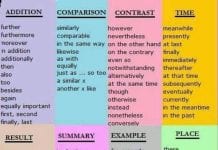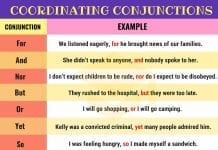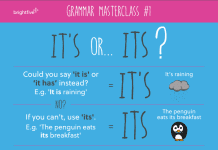Hi guys, today we are going to learn everything there is to know about direct and indirect
speech.
My aim for this article is to provide you with a great understanding of the two
speech acts, when you should use them, what they look like and how they differ from one
another.
I will provide you with an indirect speech formula, highlight all the rules and
differences between direct and indirect speech, such as the change in tense, pronoun
and overall sentence structure.
I will also show you how to make interrogative and imperative sentences in the indirect speech. I promise to make this as clear and simple as possible. Let’s get started.
- Speech Acts
- Direct Speech Definition
- The Indirect Speech Definition and Formula
- Direct Speech Indirect Speech (Present)
- Direct Speech Indirect Speech (Past)
- Direct Speech Indirect Speech (Future)
- Modal Auxiliary Verbs in Indirect Speech
- Modal Verbs that Change in Indirect Speech
- Modal Verbs that Don’t Change in Indirect Speech
- Pronouns in Indirect Speech
- Adverbs of Time and Indirect Speech
- Questions in Indirect Speech
- Yes/No Questions in Indirect Speech
- Open Ended Questions in Indirect Speech
- Imperative Sentences in Indirect Speech
- Mixed Type Sentences in Indirect Speech
- Direct and Indirect Speech Exercises
1. Speech Acts
So, as some of you may know, direct speech and indirect speech, are speech acts. They are used to pass on information or something spoken by one person, to another person.
Pretend you are in a restaurant with your friend Kim, you are having lunch together. Before you order, she tells you “I am so hungry” and she orders a huge meal.
The next day you are at home with your family, you want to tell them about your time spent with Kim yesterday.
You have two options, you can say:
- Kim said, “I am so hungry” (direct speech)
- Kim said that she was so hungry. (indirect speech)
Above are examples of how we can use direct speech or indirect speech to transmit what one person said, to another person.
Let’s take a step back, at the beginning of this article I said that direct and indirect speech are speech acts. So, what is a speech act?
We use language to achieve specific communicative acts, such as asking for a menu at a restaurant or complaining about the food in a restaurant.
We also can use speech acts to greet, threaten or invite somebody and to promise or refuse something to somebody and so on.
Below is a list of examples of different types of speech acts;
- I ask to visit my sister.
- I promise to visit my sister.
- I refuse to visit my sister.
- I threaten to visit my sister.
- I order my brother to visit my sister.
How does this differ from other acts, such as a physical act or a mental act?
Here is an example of a mental act:
- I think about visiting my sister.
And a physical act:
- I visit my sister.
Can you see how each sentence is talking about the same thing but in a different way with different possible outcomes? Just because you are thinking about visiting your sister, doesn’t mean you actually physically travel and visit your sister.
Or you may order your brother to visit your sister but that doesn’t mean he will listen to you and actually visit her. I know my brother never does anything I ever ask him to do…
We can divide speech acts into two groups; direct speech and indirect speech.
As demonstrated above, direct and indirect speech help us pass on information from one
person or time to another. But what is the difference?
Skype English Lesson with a native AMERICAN or BRITISH teacher ››
2. Direct Speech Definition
Direct speech includes exactly what the person said, the spoken phrase is placed between quotation marks and there is no need to change the tense or the pronoun in the sentence structure.
- Kim said, “I am hungry”
- The waiter said, “The food will be ready soon.”
Direct speech, narrates a situation, it recounts exactly what happened and was said at th time.
The sentence structure is very simple as you don’t have to change the tense or any pronoun that may be used, just don’t forget the comma before or after ‘said’ and the quotation marks. Below are examples of direct speech.
- They said, “We were watching a movie last night”
- “I will visit America next year,” she said.
3. The Indirect Speech Definition and Formula
Unfortunately, indirect speech isn’t as simple as direct speech, but once you understand the sentence structure and the indirect speech rules, it is straight forward and a great way to show off your English language skills.
So let’s get started, first of all, we don’t use quotation marks with indirect speech, instead we include ‘that’ before retelling what
has been said.
Look at the direct speech example again:
- Kim said, “I am hungry”
Now look at the example using indirect speech:
- Kim said that she was hungry.
Did you notice where ‘that’ is located and how the quotation marks are not required?
What else is different?
4. The Tense Change in Indirect Speech
Take a look at the examples of direct and indirect speech below:
- She said, “I study English every day.”
She said that she studied every day.
Can you see what happens to the tense with the indirect sentence structure? Yes, the present tense is changed to the past tense. This is another adjustment made when using indirect speech; sometimes we have to change the tense.
This can cause confusion for many language learners but I will provide you with a helpful tense chart that demonstrates when you need to change the tense and which tense switches with another tense.
- The Present Tenses
- The Past Tenses
- The Future Tenses
5. Direct Speech Indirect Speech (Present)
The present simple changes to the past simple.
- She said, “I play football”
- She said that she played football.
The present continuous changes to the past continuous.
- John said, “he is reading about World War II in school”
- John said that he was reading about World War II in school.
The present perfect changes to the past perfect.
- I said, “he has started the movie”
- I said that he had started the movie.
The present perfect continuous changes into the past perfect continuous.
- He said, “it has been raining all day”
- He said that it had been raining all day.
6. Direct Speech Indirect Speech (Past)
The past simple changes to the past perfect.
- Kate said, “I cooked dinner”
- Kate said that she had cooked dinner.
The past continuous doesn’t change.
- She said, “Jenny had parked the car”
- She said that Jenny had parked the car.
Past perfect doesn’t change.
- They said, “we had eaten in that restaurant before”
- They said that they had eaten in that restaurant before.
7. Direct Speech Indirect Speech (Future)
Future simple, “will” changes to “would”
- She said, “I will buy food for dinner”
- She said that she would buy food for dinner.
Did you notice how all the present tenses were changed into one of the past tenses?Also look at how the past continuous tense and the past perfect tense don’t change when you are using the indirect sentence structure, they remain the same. Try to memorise these tense rules, they will help you greatly.
8. Modal Auxiliary Verbs in Indirect Speech
Can you remember what a modal verb is in English or what its function is?
Modals are used to show modality. This means they provide extra information when used in a sentence, they may show a persons ability, obligation, possibility or permission for example.
With indirect speech you must change the modal verbs; can, may and must from the present tense to the past tense. Whereas the modals; would, could, should, ought to and might do not change when using the indirect speech.
9. Modal Verbs that Change in Indirect Speech
Let’s look at some examples to see how modal verbs work with indirect speech.
- She said, “I can speak five languages.”
- She said that she could speak five languages.
- She said, “I can’t speak a foreign language”
- She said that she could not speak a foreign language.
- He said, “I may need time off work”
- He said that he might need time off work.
- The teenagers said, “We must be home before 10 P.M.”
- The teenagers said that they had to be home before 10 P.M.
The examples above show us that the modal verb can changes to could, may changes might and must changes to had to.
Skype English Lesson with a native AMERICAN or BRITISH teacher ››
10. Modal Verbs that Don’t Change in Indirect Speech
As I said other modals don’t change when using indirect speech but you may still have to change the pronoun, the word order or the adverb of time. Read the examples below to see what I mean.
- She said, “I would travel the world if I had enough money”
- She said that she would travel the world if she had enough money.
- The students said, “we should study more before our exams”
- The students said they should study more before their exams.
Future continuous, “will be” changes to “would be”
- They said, “there will be a party next weekend”
- They said that there would be a part next weekend.
Future perfect, “will have” changes to “would have”
- I said, “I will have to study more for my exams”
- I said that I would have to study more for my exams.
- He said, “I might go to the concert”
- He said that he might go to the concert.
- Ryan said, “I could go to the shop later.”
- Ryan said that he could go to the shop later.
- Sarah said, “I ought to buy a new car”
- Sarah said that she ought to buy a new car.
11. Pronouns in Indirect Speech
Another important rule to note is the change in pronoun. Did you wonder why in some of the examples above the pronoun changed? For example:
- She said, “I play football”
- She said that she played football.
- She said, “I will buy food for dinner”
- She said that she would buy food for dinner.
The subject or the pronoun of the second part of the sentence, the indirect speech, is the pronoun that must be changed.
We have to look at the first part of the sentence, see what verb or pronoun is being used and change the pronoun, in the second part of the sentence, in accordance to this.
For example:
- She said, “I am scared of spiders”
- She said that she was scared of spiders.
- They said, “we want dinner”
- They said that they wanted dinner.
Don’t forget to change the verb in accordance to the pronoun, I am scared – She is scared.
12. Adverbs of Time and Indirect Speech
As we noted above, the tense must change when using the indirect speech. Therefore the aspect of time changes too, this means we must change the adverbs of time when using indirect speech.
- Tim said, “I am going to the match today”
- Tim said that he was going to the match that day
- They said, “we are going to Spain next year”
- They said that they were going to Spain in the following year.
This may seem a bit confusing so to make it easier for you, I have made a list of the possible changes to the adverbs, from one time to another time. Now can be changed to then.
- Today can be changed to yesterday/that day.
- Tomorrow can be changed to today/the next day.
- Yesterday can be changed to the previous day/Thursday.
- Next week/month/year can be changed to next week/month/year.
- Last week/month/year can be changed to the previous week/month/year.
13. Questions in Indirect Speech
What happens to questions when we want to change it into indirect speech? How can we use indirect speech for an interrogative sentence? Let’s have a look and find out. In English there are two types of questions, yes or no questions and open ended questions:
- Yes or no question: Are you hungry?
Response: Yes
- Open-ended question: What type of food do you like?
Response: I like Italian food.
You can’t respond to this question with a simple yes or no as it is not answering the question. An open-ended question requires more information.
14. Yes/No Questions in Indirect Speech
How do yes/no questions look when changed into the indirect speech?
- She said, “Are you hungry?”
- She asked me if I was hungry.
Again, quotation marks are not required, the tense must be changed and the pronoun may change. Did you notice how when using the indirect speech in an interrogative sentence we don’t use ‘that’ we use ‘if’?
- I said that I was happy.
- I asked her if she was happy.
Also note that the question mark is not required in the indirect interrogative sentence either.
15. Open-Ended Questions in Indirect Speech
What about open-ended questions, the questions that require a more complex response?
Let’s look at an example of an open-ended question in indirect speech to see how they look.
- I said to my mum,“why are you smiling?”
- I asked my mum why she was smiling.
- She asked him,“how old are you?”
- She asked him how old he was.
What are the differences in these sentences? First of all the tense changes, in the first example the present continuous changes to the past continuous; are smiling – was smiling. The second example, the simple present changes to the simple past; you are – he was.
The pronouns also change: you – she and you – he. ‘If’ isn’t required with open-ended questions but there is a change in the word order, did you see that?
The indirect speech reverts the interrogative sentence structure back into the affirmative sentence structure. I will demonstrate this now with some examples:
- I said to my mum,“why are you smiling?”
- I asked my mum why she was smiling. (I asked my mum why was she smiling.)
- She asked him,“how old are you?”
- She asked him how old he was. (She asked him how old was he.)
- Tom said to Sam, “How are you?”
- Tom asked Sam how he was. (Tom asked Sam how was he.)
16. Imperative Sentences in Indirect Speech
Now that we know how to adjust interrogative sentences, lets look at how we can adjust imperative sentences into indirect speech.
Before we do that, can you recall what an imperative sentence is? What its function is? What it looks like?
We use imperative sentences to give commands, such as telling your brother to visit your sister or asking for the menu in a restaurant. These sentences can end with a full stop or an exclamation mark.
So how does an imperative sentence look in the indirect speech?
- She said to the waiter, “please give me a menu”
- She requested the waiter to give her a menu.
- The teacher said to the students, “be quiet”
- The teacher ordered the students to be quiet.
- His mum said to him, “you need to study more”
- His mum advised him to study more.
- He said, “Let’s join the English language society in college.”
- He suggested joining the English language society in college.
Don’t forget about the negative request:
- The teacher said, “Please don’t talk in class”
- The teacher said not the talk in class
- The sign in the restaurant said, “No smoking”
- The sign in the restaurant asked the customers not the smoke.
What about interrogative sentences that end with an exclamation mark?
- She said, “Yes! I got an A in my exam.”
- She exclaimed with amazement that she had gotten an A in her exam.
- They said, “Oh no! We lost our car keys.
- They exclaimed with disbelief that they had lost their car keys.
17. Mixed Type Sentences in Indirect Speech
Finally, we will look at what happens to a mixed type sentence structure in direct and indirect speech. A mixed type sentence structure can be a statement or a question that contains more than one clause and more than one tense.
If we look at the mixed type phrase below, you will see that there are two parts to the phrase.
- You have a lot of work to do. Can I help you?
Can you see how the example above is divided into two separate sections? The first section is a statement; you have a lot of work to do and the next sections is a questions can I help you?
If we want put this sentence in direct speech we can simply quote what was said, below is an example of a mixed type sentence in direct speech.
- He said, “You have a lot of work to do. Can I help you?”
There is no need to change the tense or a pronoun here, simply narrate what was said. What do you think happens with indirect speech?
We know from the indirect speech formula that we usually change the tense and the pronoun, we also know that questions in indirect speech require changes too. Mixed type sentences can be divided into sections; statements and questions for example.
With indirect speech we must introduce each section with an appropriate verb, this means the statement section should be introduced by a particular verb such as tell or say whereas the question section needs to introduced by verbs like ask or wonder.
Let’s use the example above and see how it changes in the indirect speech.
- He said that Clare had a lot of work to do and asked if he could help her.
Can you see how the two introductory verbs say and ask separate the two sections? Said introduces the statement and asked introduces the question. That and if are used in the same way they are used with regular sentence structures in indirect speech.
The tense and aspect of time also follows the same rule, they usually have to be changed into the past. Look at the examples below, keeping in mind the various sections, introductory verbs, pronouns, tense and overall word order.
- She said, “I am so hungry. Can I have something to eat?”
She complained that she was hungry and asked if she could have something to eat.
- Emmet said, “Do you like learning English? I love it!”
Emmet asked if she liked learning English and exclaimed that he loved it.
So there you go! I have included all you need to know about direct and indirect speech. How did you find it? You should now be able to point out differences between the two speech acts.
That the direct speech narrates exactly what has been said and that when using the indirect speech you must make a few changes. For example, there may be change in tense, a change in pronoun or a change in time.
What else is different? Remember, we don’t use quotation marks when using indirect speech, we also don’t need the comma before the narrated phrase.
Keep in mind that when an interrogative sentence is in the indirect speech, the word order switches from the interrogative sentence structure to the affirmative sentence structure. I have given an example below to remind you.
- She asked, “Is it raining?”
- She asked if it was raining.
Do you see how the verb ‘to be’ moves from before the pronoun to after the pronoun?
When writing an interrogative sentence, don’t forget to put ‘if’ before the narrated phrase!
I hope you found this article helpful and the two speech acts are a lot clearer for you now.
Remember, the indirect speech is telling you what was said before, so most of the time you will have to change the verb tense and pronoun, but use the list of verb tenses I gave you as a guide, it really does help!
More:
https://www.myenglishteacher.eu/ask/question/what-is-direct-and-indirect-speech/
Direct and Indirect Speech Exercises
Here are exercises to help you practice what you have learnt about direct and indirect speech. I have also provided you with the answers.
When completing the worksheet keep in mind the parts of the sentence you might need to change such as the tense, the pronoun, the adverb of time and the overall word order. Good luck!
1. Complete the sentences below:
1. She said, “I am so happy!”
She said ___________________________________________.
2. Tom said, “I cooked dinner last night”
Tom said ___________________________________________.
3. They said, “We are going to the football match”
They said ___________________________________________.
4. He said, “Kevin is training for the marathon”
He said _____________________________________________.
5. I said, “the shop closes at 7 P.M. tonight”
I said _______________________________________________.
6. The teacher said, “You will have a test tomorrow”
The teacher said ______________________________________.
7. “She had forgotten her homework,” she said.
She said ___________________________________________.
8. “It has been raining all day, today,” he said.
He said ____________________________________________.
2. Complete the sentences using modal verbs:
1. Jane said, “I can’t go to the party tonight”
Jane said ___________________________________________.
2. He said, “I may move to Canada next year”
He said ____________________________________________.
3. They said, “We should go to the cinema next week”
They said ___________________________________________.
4. She said, “Kate ought to go to the doctor tomorrow”
She said ___________________________________________.
5. “We can drive to the exam centre together,” the students said.
The students said ____________________________________.
6. Gerry said, “I would go to the theatre if I had money”
Gerry said ___________________________________________.
7. “We ought to clean the house before our parents come home,” they said.
They said ___________________________________________.
8. He said, “I must check how much the tickets cost”
He said ___________________________________________.
3. Change the questions below from direct speech to indirect speech:
1. She said to her daughter, “Are you coming home for dinner?”
___________________________________________________.
2. I said, “How old are you?”
___________________________________________________.
3. They asked each other, “What will we do this summer?”
___________________________________________________.
4. He said to Kim, “Why are you shouting?”
___________________________________________________.
5. I said to them, “Is the movie over?”
___________________________________________________.
6. He asked her, “Are you ok?”
___________________________________________________.
7. I asked, “When is your birthday?”
___________________________________________________.
8. The teacher said, “Are you ready for the test?”
___________________________________________________.
Answers:
1. Complete the sentences below:
1. She said, “I am so happy!”
She exclaimed that she was so happy.
2. Tom said, “I cooked dinner last night”
Tom complained that he had cooked dinner the night before.
3. They said, “We are going to the football match”
They said that they were going to the football match.
4. He said, “Kevin is training for the marathon”
He said that Kevin was training for the marathon.
5. I said, “the shop closes at 7 P.M. tonight”
I said that the shop closed at 7 P.M. last night.
6. The teacher said, “You will have a test tomorrow”
The teacher told me that I would have a test the next day.
7. “She had forgotten her homework,” she said.
She said that she had forgotten her homework.
8. “It has been raining all day, today,” he said.
He commented that is had been raining all day, that day.
2. Complete the sentences using modal verbs:
1. Jane said, “I can’t go to the party tonight”
Jane said that she couldn’t go to the party last night.
2. He said, “I may move to Canada next year”
He said that he might move to Canada next year.
3. They said, “We should go to the cinema next week”
They said that they should go to the cinema next week.
4. She said, “Kate ought to go to the doctor tomorrow”
She said that Kate ought to go to the doctor today.
5. “We can drive to the exam centre together,” the students said.
The students said that they could drive to the exam centre together.
6. Gerry said, “I would go to the theatre if I had money”
Gerry said that he would go to the theatre if he had money.
7. “We ought to clean the house before our parents come home,” they said.
They said that they ought to clean the house before their parents came home.
8. He said, “I must check how much the tickets cost”
He said that he had to check how much the tickets cost.
3. Change the questions below from direct speech to indirect speech:
1. She said to her daughter, “Are you coming home for dinner?”
She asked her daughter if she was coming home for dinner.
2. I said, “How old are you?”
I asked him how old he was.
3. They asked each other, “What will we do this summer?”
They asked each other what they would do for the summer.
4. He said to Kim, “Why are you shouting?”
He asked Kim why she was shouting.
5. I said to them, “Is the movie over?”
I wanted to know if the movie was over.
6. He asked her, “Are you ok?”
He wondered if she was ok.
7. I asked, “When is your birthday?”
I asked him when his birthday was.
8. The teacher said, “Are you ready for the test?”
The teacher wanted to know I was ready for the test.
























‘The past continuous doesn’t change.
She said, “Jenny had parked the car”
She said that Jenny had parked the car.’
is it past continuous?!!!!!!!!!!!!!!!!!!!!!!!!!!!!!!